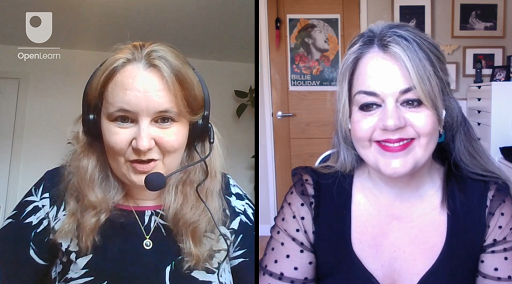4 Solutions
Despite the significant challenges to performing women’s music that still exist, there are potential solutions to overcoming this.
Activity 3
Watch another clip of an interview with Gabriella Di Laccio, founder and curator of Donne Women in Music, discussing potential solutions to performing more music by women.

Transcript
LAURA HAMER
So, Gabriella, what do you see as potential solutions to performing more music by women?
GABRIELLA DI LACCIO
Me as a singer, if I want to include a piece, I can listen to more works by women. It’s so much easier today and then start little by little, amplifying my repertoire, or adding a piece as an encore if, for example, somebody asked me to perform and it wasn’t my control on the repertoire, little things like that. Or a programmer for a bigger orchestra or festival. The same thing, just try to listen to more things and connect maybe with organisations like Donne that can provide some help. And after we make the choices as well, I believe it’s very important how we present these pieces. Every time I present a new piece in my concerts, for example, I always tell a story. You don’t simply put a piece in the programme. You build a story behind [it], you invite people to be part of that conversation. And in every concert I’ve done that, everybody leaves with this hunger for learning a bit more about [the music] and planting that seed of curiosity in the audiences that I think is so important. I don’t feel audiences will have such a problem if, and that’s what I’m saying, if you find ways of presenting that piece in a creative way. For example, if you’re already doing a very famous piece that will bring an audience to the concert, you have no excuse. You can certainly add a couple more that people didn’t hear before, but you think, ‘Wow, I think this piece really is a person like Beethoven’s fifth. They will like this other piece’. So it’s just spending a bit more time and being creative. So this is for me an easy solution. If you want to not have to deal with the fear of audiences not coming, just put something very well known. And around that, create a concert programme that will have a nice conversation with that big piece. It’s either a composer from the same time, a woman, or from a similar theme that of the same... It’s just using creativity. I truly believe that another way of moving forward and very, very important would be commissioning new music by women. Making sure, and this is talking like one work at the beginning, that we can restore and publish more of the music that still remains in libraries, in archive boxes, sometimes in the houses of people. You know how many women, and I’m not some musicologist, I can [specify]... More than 20 houses I’ve been that I have seen music that is in literally archive boxes under a bed of someone’s house because they don’t know what to do, they don’t want to give it to somebody, they don’t have money to publish, and find creative ways to build new audiences. For me, I think this is the easier part because people are so open to new stories, to hear new things, to be inspired actually. I think the truth is we have so much music to be discovered and the inspirational stories behind every new piece, and this really will continue to open doors to new audiences, which is what we need. I truly believe this could be transformational, not only for the industry, but for all of us who are part of it.
LAURA HAMER
Thank you very much Gabriella for sharing your experience and your inspiring story.
What does she identify as potential solutions?
Discussion
You may have noted some of the following:
- adding pieces by women to your repertoire
- connecting with organisations that promote women’s music
- contextualising the music for audiences
- creative programming, such as including a work by a woman composer alongside more well-known works by a male peer
- developing new audiences
- commissioning new works by women
- creating performance editions of women’s works
- researching women composers and their music.
In the following weeks, you will consider further all the potential solutions which Gabriella mentions, including where to start researching historical women composers, how to find scores, creating editions, commissioning new works from living women composers, and building new audiences for women’s music.
